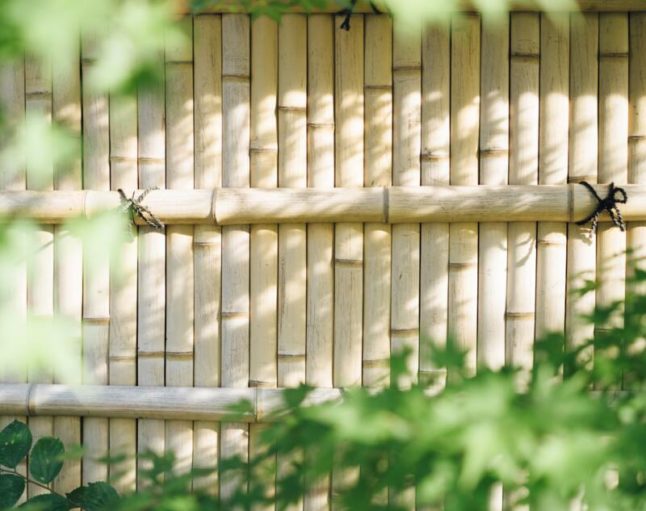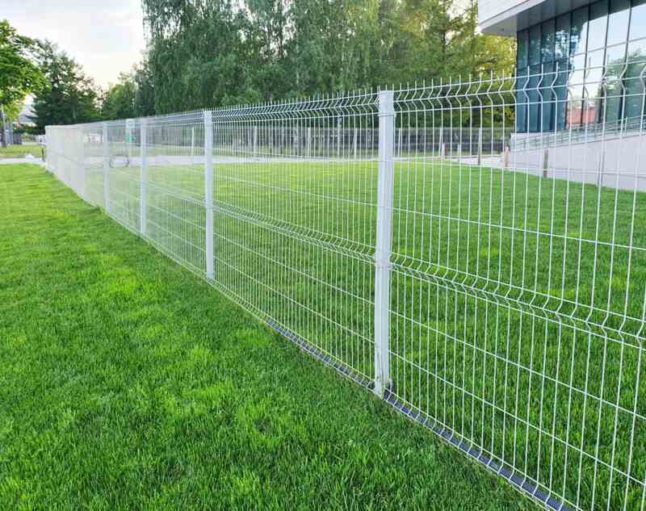
With the growing popularity of eco-friendly building materials and methods, it’s no surprise that there are now a number of eco-friendly fencing options. From traditional wood fences made from sustainable lumber to composite fences made from recycled materials, there are many choices available to build an eco-friendly fence.
What Does Eco-friendly Mean?
The term “sustainable” is a popular way to label products and services aimed at increasing longevity or reducing environmental impact. In general, the terms “eco-friendly” or “sustainable” refer to practices that protect the environment or conserve resources.
What makes an object sustainable is a bit tricky to define, but there are several key factors.
- Recyclable: The product can be reused or repurposed instead of constructing new ones or adding new ones to the environment.
- Eco-friendly construction: Is it built using methods that have a minimal impact on the environment.
- Durable: The product will last a long time and be reusable or recyclable after its lifespan is over.
- Natural materials: The product is made with natural or organic materials.
6 Eco-friendly Fencing Options
Here are some of the most popular and cost-effective environmentally friendly fencing options.
1. Bamboo

Bamboo is a great eco-friendly fencing option. It is a renewable resource and requires no chemicals or much water to thrive. Bamboo is also very strong and durable – stronger than wood – making it a great choice for fencing. Bamboo is twice as strong as cedar. If properly installed , a bamboo fence can withstand hurricane winds.
In addition, bamboo is resistant to termites, which cannot digest the silica found in bamboo.
Bamboo fencing is also an ideal material for both residential and commercial properties because it is lightweight and easy to install. Best of all, bamboo fences cost less than traditional fencing materials.
2. Composite
Composite materials are produced from recycled plastic and wood fiber and do not require painting or staining like other fencing options. They are durable, requiring little maintenance, and they have a classic style that will never go out of fashion. Composite fences come in a wide range of colors and styles to suit your taste.
A composite fence is a natural-looking barrier that is durable, insect-resistant and weather-resistant. It is used in both residential and commercial properties.
3. Living
A living fence is a great way to reduce your carbon footprint while adding beauty and functionality to your property. A living fence is essentially a hedge made of fast-growing plants placed close together and trained to grow into a living wall.
Living fences can be evergreen plants, trees, and shrubs. They can also be bamboo stands or any dense growth of rigid plants. Living fences have the additional benefit of filtering air pollutants and providing homes for wildlife. Easy installation and maintenance make these fences great choices for some homes.
4. Stone

Stone is another great choice, and it doesn’t require any harmful chemical treatment. Stone fences can last for centuries, making it perhaps the most durable option. It is also very low maintenance, as it does not require painting like other fencing materials.
Stone fences also provide a natural look that can complement any home. Plus, the look of stone is hard to beat! Depending on the stone you choose, you can create a rustic feel, gothic, Mediterranean, European or other styles. If you’re looking for a way to add aesthetic value to your property, then stone is an excellent choice. It’s long-lasting and low maintenance. The fence is also resistant to rot, decay, and insect damage.
There are several types of stone you can use. You can choose from items like travertine, marble, granite, and sandstone. Each type has various color options and grain patterns, allowing you to select a style that perfectly matches your home or business.
5. Wood
There are many fencing options on the market, but wood is one of the most eco-friendly. Wood is a renewable resource, of course, and can be reused or recycled when it is no longer needed. Wood is also biodegradable, so it will not clutter landfills.
One of the other benefits of wood is its versatility. Wood fences can be constructed in a variety of styles to create any feel, from rustic to contemporary and everything in between.
Wood fencing is typically made of redwood, cedar, or other wood products that are certified by the Forest Stewardship Council. Wood fences can also last a long time if they are properly maintained.
6. Metal

Looking for a more sustainable fencing option? Consider metal! Some metal fences are made from recycled materials and are recyclable themselves, making them a great eco-friendly choice. They’re also extremely durable and low-maintenance, so you can feel good about your purchase for years to come.
There are many types of eco-friendly fencing materials, from metal, including aluminum, steel, chain link, and wrought iron. Each type has its own unique benefits that make it a good choice for eco-friendly fencing. Aluminum is a lightweight metal that is easy to work with, making it a good choice for home projects.
It is also resistant to rust and corrosion, making it a good choice for coastal areas. Steel is a strong metal that is durable and low maintenance. It is also easy to recycle, making it an environmentally friendly choice. Wrought iron and chain link are classic fencing materials that are beautiful and long-lasting.
What Are the Benefits of Eco-friendly Fencing?
Eco-friendly fencing has many benefits over traditional fencing options, including being more aesthetically pleasing, providing privacy, and being environmentally friendly. The materials are durable and can keep pets in and wildlife out.
Aesthetically Pleasing
Eco-friendly fencing adds a touch of beauty and value to your home with low environmental impact.
Privacy
Eco-friendly fencing provides privacy by blocking out unwanted views and noise. It also provides a sense of security and safety. It’s a great way to create a private space in your yard without harming the environment.
Environmentally Friendly
Made from sustainable materials, eco-friendly fencing help reduce your carbon footprint and improve your home’s energy efficiency. This type of fence doesn’t put a strain on the planet’s resources. It also helps improve air quality.
Durability
Eco-friendly fencing is not only good for the environment, it is also durable. This type of fencing is made from recycled materials, so it is a sustainable choice that will last for years. It is also low maintenance, so you won’t have to spend a lot of time and money on repairs.
It is also resistant to insect damage and decay; as it can withstand the elements. Eco-friendly fencing is an investment that will pay for itself over time.
What Makes Certain Fencing Materials Eco-friendly?

The popularity of eco-friendly products and services is increasing day by day. With the greening of our homes and industries, many designers are focusing on creating sustainable environments. The fencing industry, which is a significant contributor to environmental degradation, is receiving much-needed attention for incorporating sustainability measures in its work.
There are many ways a fencing project can be green, from the selection of environmentally friendly materials to the manner the project is built. Here are a few features that make fencing eco-friendly:
Recycled Materials
The use of recycled materials reduces waste in landfills. The fence material should be reusable at the end of its life. In fact, some materials, such as aluminum, are eco-friendly because they can be recycled over and over again.
Manufacturing Process
The manufacturing process should not produce harmful emissions, but should be environmentally friendly and efficient. The process should produce products made with little or no chemicals, which reduces their impact on the environment.
Bio composite fencing is one type of eco-friendly fencing made from recycled materials. The manufacturing process starts with recycled plastic and wood chips that are melted down and poured into a mold that creates the desired shape. The materials are processed into boards and finished with a protective coating or sealants.
This process creates a strong, durable material that resists rot, insect damage, and weathering. Be sure to research the manufacturing process of any eco-friendly fencing material before purchasing it.
Sustainable Materials
Sustainable fencing materials are often used to create barrier gardens, which reduce soil erosion and filter pollutants out of water. Using materials that are durable and require little maintenance help reduce the environmental impact of a fence.
The type of materials you choose can make a big difference in the overall sustainability of your project. Aluminum and steel are also sustainable fencing materials. Furthermore, some eco-friendly fencing materials may be certified by organizations such as the Forest Stewardship Council (FSC), which ensures that the materials were sourced sustainably.
Renewable Resources
Some materials, such as bamboo, are environmentally friendly because they are renewable resources. Renewable resources are resources that can regenerate over time, assuring that it will be around in perpetuity. Bamboo can be harvested, for instance, but it can re-grow over time or be replanted to replace what was cut for consumption.
It is important to check the certifications of your renewable product to ensure it comes from a reputable source, however, since not all bamboo comes from a sustainably managed forest.
FAQ About Eco-friendly Fencing
If you’re handy with tools and comfortable working outside, installing an eco-friendly fence yourself may be possible. However, if you’re not confident in your abilities, leave it to the professionals.
The best way to make a fence more eco-friendly is to use recycled and sustainable materials whenever possible.
The main drawback of eco-friendly fencing is the initial cost. Green fencing can be more expensive than traditional fencing options, but the long-term savings and environmental benefits can be significant.
Our Take on an Eco-friendly Fencing Project
Eco-friendly fencing can be a great addition to any home, not only for its aesthetic value but also for its many benefits. Eco-friendly fencing options are available for those who are looking for a way to be more environmentally conscious.
At LawnStarter, we are always looking to improve our processes and find new ways to work smarter. One way we’re working to become more efficient is by exploring sustainable fencing options. Eco-friendly fencing is a great way to go green and help the environment. Contact us today for a free quote.
Main Image Credit: Armastas / Canva Pro / License






